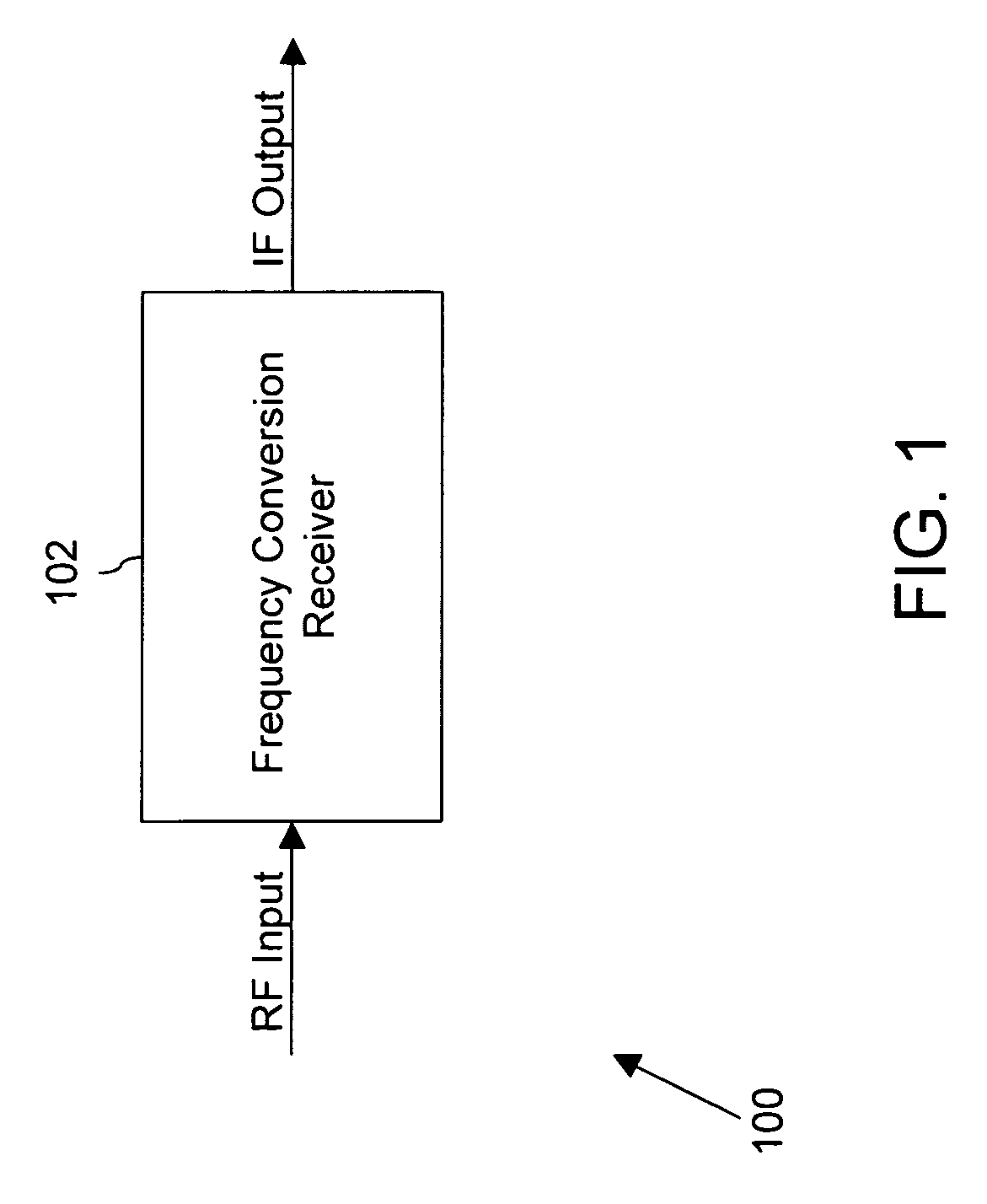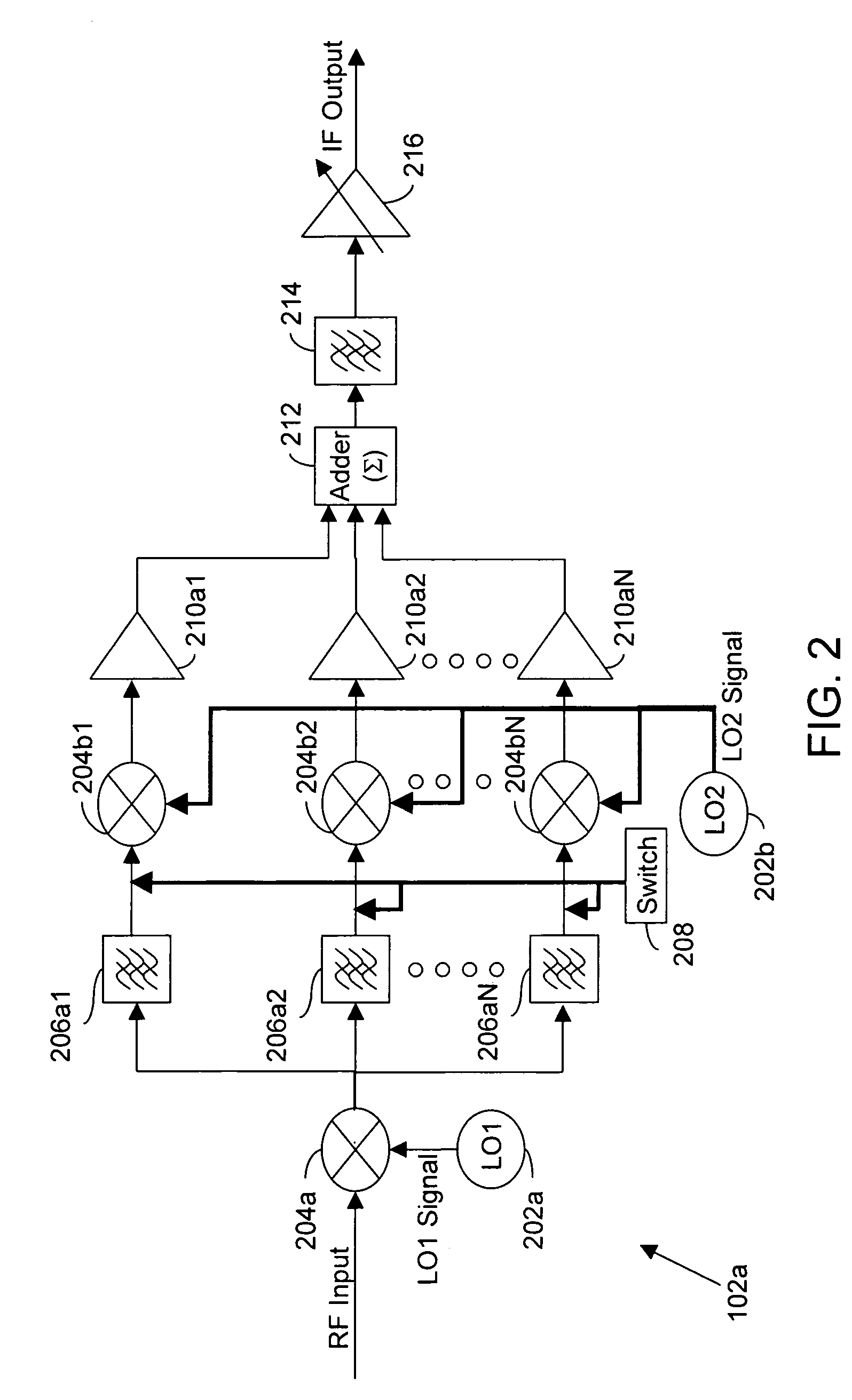System and method for frequency multiplexing in double-conversion receivers
a frequency conversion and receiver technology, applied in the field of frequency conversion receivers, can solve the problems of high insertion loss, poor signal-to-noise ratio, restricted wideband frequency conversion of signals, etc., and achieve the effect of reducing inter-modulation distortion, optimum signal-to-noise ratio, and saving power
- Summary
- Abstract
- Description
- Claims
- Application Information
AI Technical Summary
Benefits of technology
Problems solved by technology
Method used
Image
Examples
Embodiment Construction
[0022]Various embodiments of the invention provide a system and method for frequency conversion in a frequency-conversion receiver. The frequency-conversion receiver receives input RF signals carrying multiple channels. The frequency-conversion receiver allows processing of multiple channels by converting the input RF signals to an IF band. The IF band is then processed and further down-converted, filtered and amplified, according to the required channels for the desired final output IF signals.
[0023]FIG. 1 is a block diagram of an environment 100 in which various embodiments of the invention may be practiced. Environment 100 includes a frequency-conversion receiver 102. Frequency-conversion receiver 102 converts the input RF signals to desired output IF signals. Frequency-conversion receiver 102 performs frequency multiplexing to provide frequency signals carrying multiple channels. The desired output IF signals are further provided to a demodulator. The demodulator, for example, a...
PUM
 Login to View More
Login to View More Abstract
Description
Claims
Application Information
 Login to View More
Login to View More - R&D
- Intellectual Property
- Life Sciences
- Materials
- Tech Scout
- Unparalleled Data Quality
- Higher Quality Content
- 60% Fewer Hallucinations
Browse by: Latest US Patents, China's latest patents, Technical Efficacy Thesaurus, Application Domain, Technology Topic, Popular Technical Reports.
© 2025 PatSnap. All rights reserved.Legal|Privacy policy|Modern Slavery Act Transparency Statement|Sitemap|About US| Contact US: help@patsnap.com



